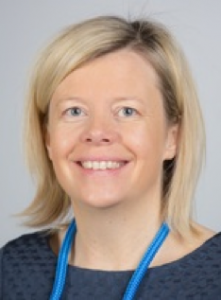
Prof Severine Vermeire
There have been some ‘heroic achievements’ in IBD but we are currently stuck with a therapeutic gap and the inability to arrest disease progression or prevent or cure IBD, AGW 2018 was told.
Delivering the Bushell Lecture, Professor Severine Vermeire said that clinical remission rates of 30-40% were woefully inadequate.
“At the moment, in all of the trials we have seen, we are just lumping together all people with Crohn’s disease or all patients with ulcerative colitis and we are testing a new drug in Crohn’s disease but Crohn’s disease is not just one disease. There are so many subtypes in Crohn’s disease that I think this is one of the reasons why the results that we see are not better.”
“One of the challenges is that our clinical phenotypes are insufficiently matched with the underlying pathophysiological pathways.”
“Our colleagues in colorectal cancer have shown it is better to classify on the basis of molecular subtypes.”
Professor Vermeire from the University Hospital Leuven in Belgium, said one of the hero moments in IBD included recognition of the association between NOD2 mutations, now CARD15, and Crohns’s disease in 2001.
About 45 genetic variants are very likely to be causal – some such as IL10 and XIAP causing very severe disease – yet the ‘slow motion epidemic’ of IBD was spreading at a rate that could not be fully explained by genes.
She said another hero moment in IBD was the confirmation that infliximab could heal colonic ulceration.
Professor Vermeire also welcomed the recent approval of tofacitinib in Europe.
She said the next treatment advances would come with more extensive profiling of patients using ‘multi-omics’.
“I think we need to become much more precise regarding which patients we want to target for which treatment. At the same time, I don’t believe that one treatment will be enough even for a sub-group of patients.”
“Even in a sub-group of patients we will need a combination approach of targeting the microbiota, at the same time the immune system, at the same time maybe the barrier.”
“And in a given patient the microbiota might need much more targeting because the microbiota is very deficient, in another patient the microbial component is still pretty much okay but the barrier is extremely bad.”
She noted treatments would include the anti-TNFs, IL-12/23, anti-integrins, JAK inhibitors, microbiome modulation and cell based therapies, underpinned by nutritional therapy.
“So I think how and at what time point during the disease which combinations are used needs to be much more sophisticated than what we are doing at the moment. And we should be much more ambitious than just hoping for a 30% remission.”
Professor Vermeire said there were features of IBD that were not well understood such as ‘fat creeping’, the abrupt demarcation line between affected and normal parts of the bowel, and remodelling seen in structuring disease.
“These are things have been described for decades but, as a clinician, are not yet understood. These are a number of observations that people have seen for years and there is not enough investment in trying to understand what is happening in these patients and I think this will help us in moving forward with new therapies hopefully.”